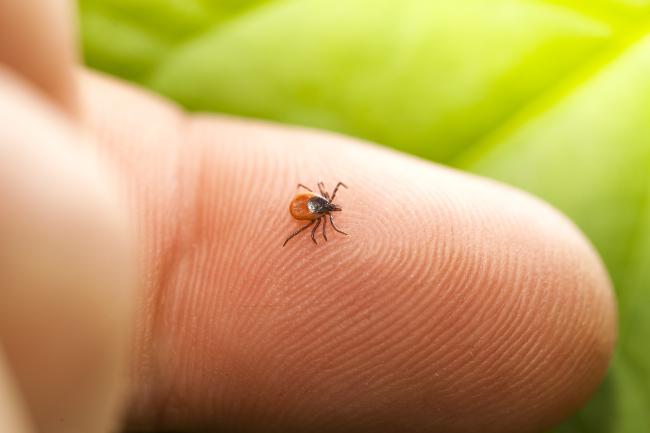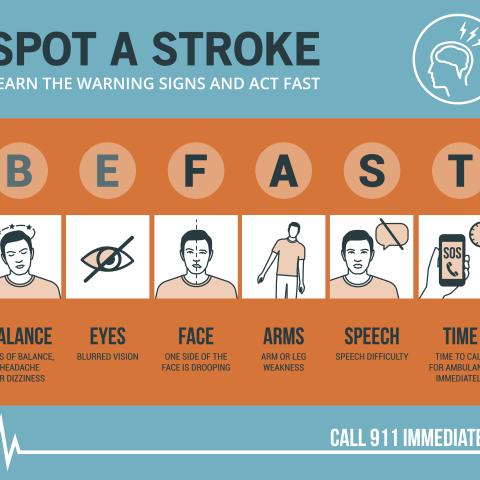Posted In Health Tips on April 19, 2024

Lyme disease is a bacterial infection caused by the bite of an infected black-legged (deer) tick. According to the Centers for Disease Control and Prevention (CDC), more than 476,000 people in the U.S. may be infected with Lyme disease this year. It is most common in the spring and summer seasons and has been reported in all 50 states.
Symptoms and treatment
According to the CDC, ticks need to be attached for more than 24 hours and begin filling with blood before they can transmit (spread) Lyme disease bacteria. Most people are infected through the bites of immature ticks called nymphs, which are difficult to see and can be as small as a poppy seed.
Early signs and symptoms of Lyme disease can appear between three to 30 days after a tick bite and can include fever, chills, headache, fatigue, neck stiffness, muscle and joint pain, brain fog, swollen lymph nodes, and a bulls-eye rash (which appears about 70-80% of the time). As the disease progresses without treatment, the symptoms continue, becoming more debilitating and may affect the brain, heart, and other organs.
When caught early, most cases of Lyme disease can be treated successfully with a few weeks of antibiotics. Late-stage Lyme disease can occur when symptoms are not recognized, treatment is started too late or is unsuccessful. This stage can occur months or years after the initial infection and can have a debilitating effect on a person’s quality of life.
Prevention
- Mow your lawn frequently, keep leaves raked and plant deer-resistant gardens and shrubs.
- Avoid wooded and brushy areas with high grass or leaf litter.
- Walk in the center of trails. Don’t rest under trees.
- Wear light-colored clothing to make it easier to see ticks. Cover exposed areas by wearing a hat, long sleeves, long pants, and closed-toe shoes or boots.
- Tuck pants into socks, and shirt into pants, to prevent ticks from crawling onto your skin.
- Use topical tick repellants, many of which contain DEET, IR3535, picaridin, and/or oil of lemon eucalyptus.
- Consider treating your clothing and gear with 0.5% permethrin.
- Be sure your pets have tick protection. Tick control for pets comes in multiple forms including topical solutions, oral medications, collars and sprays. If you're unsure which to use, consult your local veterinarian.
- After coming in from outdoors, check your clothes, body, gear, children and pets for ticks.
- Body areas to check: Under the arms; in and around the ears, neck, scalp and hair; inside the belly button; back of the knees; in and around the groin; between fingers and toes; and around the waist.
Removal
If you spot a tick on you or your family member, remain calm and follow these instructions to remove it:
- Grasp the attached tick with tweezers as close to the skin as possible.
- Gently pull up with steady pressure until it releases.
- Save the tick in a sealed container or bag with alcohol or flush down the toilet.
- Clean the tweezers, the bite site, and your hands with rubbing alcohol or soap and water.
Be proactive and practice the above prevention steps to protect yourself and your family against Lyme disease and other tick-borne diseases.





